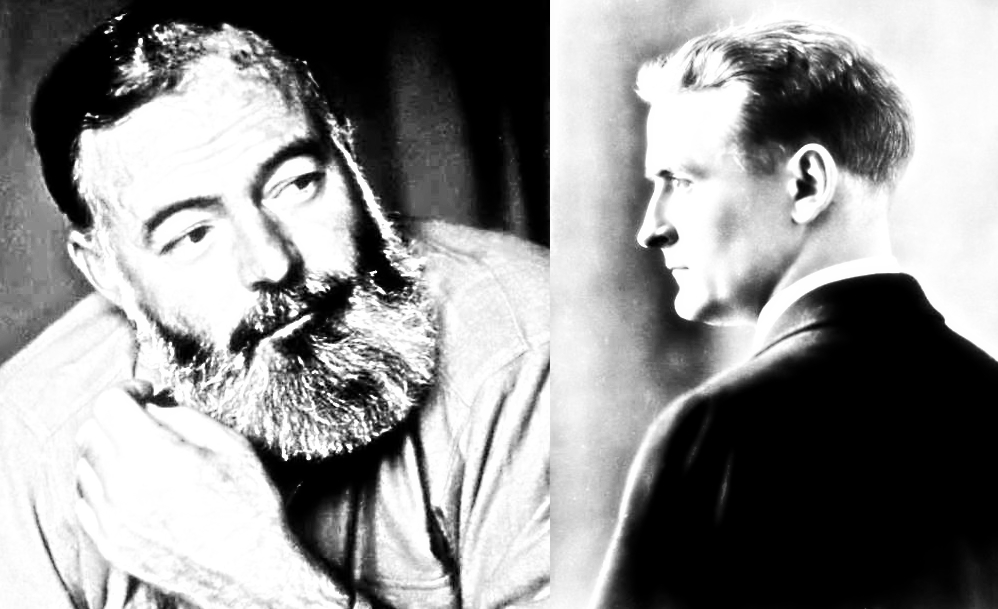The maniac was standing partly in the doorway of the secret room, now, his weapon still menacing Kane. Suddenly he seemed to topple backward, and vanished in the darkness; and at the same instant a vagrant gust of wind swept down the outer corridor and slammed the door shut behind him. The candle on the wall flickered and went out. – Rattle of Bones
The horrible darkness of unknowing and terror glides through our subconscious in terrible times: when it is dark and we can’t find our way, or when a strange visage appears on the horizon, or in the shadows, and confounds our senses.
Today on the blog we are going to summarize and analyze “Rattle of Bones” by weird-fiction author Robert E. Howard, who was also the progenitor of the sword and sorcery genre. As it so happens, this story features weird elements and also has a few hallmarks of the sword and sorcery genre: intense action and menacing villains.
Who is the protagonist, Solomon Kane?
I thought it would be important to discuss the hero of our tale, as he appears in many other stories as well. Solomon Kane was the invention of Robert E. Howard, who also created the classic Conan the Barbarian, and Kull the Conqueror. Though, Solomon differs from these two former characters as his slavish devotion to his faith is what pushes him forward on adventure.
Kane is a faith-based warrior, attempting to fight evil in the name of his convictions.
“Unlike Conan and Kull—two of Howard’s creations I’ve discussed in recent posts—Solomon Kane is neither barbarian nor king. Instead, he’s a Puritan adventurer traveling through Europe and Africa during the late sixteenth and early seventeenth centuries” (Cohen).
As such, Kane is a serious figure who is interested in serious work. Though, much like many of Howard’s character, they unwillingly stumble into abstract adventures where the monsters are melded with the Lovecraftian horror of the unknowable. In isolation, the story “Rattle of Bones” is a hybrid of adventure and horror, with gruesome deaths and dark settings that are perfect of readers interested in Gothic horror with a flair of frenzy.
Summary
• The tavern
Our story begins in a black forest near the Cleft Skull Tavern that was “low, long and rambling, built of heavy logs.” Over the front door was the portentous sign that featured the image of the titular cleft skull. Two men, Solomon Kane and Gaston l’Armon, are greeted by their host, a bearded man who is suspicious of their motives.
Howard describes them: “The two men sat down, with the bearing of men who have traveled far. One was a tall gaunt man, clad in a featherless hat and somber black garments, which set off the dark pallor of his forbidding face. The other was of a different type entirely, bedecked with lace and plumes, although his finery was somewhat stained from travel. He was handsome in a bold way, and his restless eyes shifted from side to side, never still an instant” (Howard).
The two men eat and then are off to bed, deciding to leave early in the morning when there is sunlight.
• Sleeping quarters
The two adventurers, Kane and Gaston, follow the host to their quarters, after he has left, they begin to discuss how they could possibly bar the door from being murdered in the night.
“Let us see if there be any way to make fast the door,” said Kane. “I like not the looks of mine host.”
“There are racks on door and jamb for a bar,” said Gaston, “but no bar.”
“We might break up the table and use its pieces for a bar,” mused Kane.
“Mon Dieu,” said l’Armon, “you are timorous, m’sieu.”
Kane scowled. “I like not being murdered in my sleep,” he answered gruffly.
Here, it is revealed that the two men met on the road, and while Kane recognizes Gaston, he can’t quite place where he knows him from exactly.
After fruitlessly searching for a bar to the door in their own room, they begin to search the tavern. They look through a second room and find nothing, and then upon venturing into the third room, they discover “that the door was provided with a small barred opening, and fastened from the outside with a heavy bolt, which was secured at one end to the door-jamb” (Howard).
On the floor of the room, there is a darkened spot where dried blood coagulated. Kane remarks that “Men have died here” when Gaston discovers a secret room that has the bones of a long-dead victim shackled to the floor. Gaston makes a crude remark of the dead man and is rebuked by Kane, though Gaston says that he would come back from the dead to kill his attacker.
• A wolf in sheep’s clothing
As Kane thinks about the “demonry” of this murder, Gaston places a gun to the back of his neck. Kane recognizes the man as Gaston the Butcher and that he even recalls seeing him “in Calais some years agone.” Just as Gaston is telling him that Kane will never see him again, a strange sound occurs, which Kane refers to as “the rattle of bones.”
The two men exchange words regarding Kane’s naiveté, Gaston’s barbarism, and Gaston’s league with the host, but right before Gaston kills Kane, a great shape takes up behind him.
“And with the suddenness of death, from the darkness behind Gaston’s back, a broad, vague form rose up and a gleaming blade swept down. The Frenchman went to his knees like a butchered ox, his brains spilling from his cleft skull. Above him towered the figure of the host, a wild and terrible spectacle, still holding the hanger with which he had slain the bandit” (Howard).
The host, whose insanity becomes clear to Kane, begins to lament his long, tortured years in a “Continental” prison, which destroyed his mind for crimes he never committed. The host tells Kane: “and here I make war on all men….”
The host reveals to Kane that he had taken his bitter resentment for revenge out on anybody who came to his tavern, including a Russian sorcerer who threatened to kill him after death; thus, the host stripped him of flesh and shackled him in the secret room. Yet, while monologue, the host is suddenly swept into the room and the door slams shut. Kane was left alone in the darkened tavern.
“Kane’s groping hands, sweeping over the floor, found a pistol, and he straightened, facing the door where the maniac had vanished. He stood in the utter darkness, his blood freezing, while a hideous muffled screaming came from the secret room, intermingled with the dry, grisly rattle of fleshless bones. Then silence fell” (Howard).
As it turns out, Gaston had kept his promise about avenging his own death, because as he died he released the Russian sorcerer’s skeleton, which, in turn, slayed the horrible host.
Analysis
Howard’s story “Rattle of Bones” is a story of revenge and vengeance. It features the crusader character Solomon Kane in a passive mode (typically his best stories) where he watches horror unfold. Gaston, a maniacal and plotting character who is greedy and craven, attempts to slay Kane, but in the process of his own ignorance is slaughtered himself. The host, whose wish is to see his own revenge paid on humanity, is killed by a terrifying sorcerer that he himself killed.
The story is a cyclical tale of blood begetting blood. To do harm is to have harm cast upon you. Kane, a fallible character of shortsightedness and anger, falls prey to Gaston and later is unhinged by the sight of sorcery in the secret room makes it out unscathed, as he is the only character in the story not seeking vengeance to some degree.
It’s a strange tale, for sure, but it is simple and fun for any dark-night read.
Works Cited
Cohen, Douglas. “The Tortured Soul: Robert E. Howard’s Solomon Kane. Dec. 11, 2008. Web. https://www.tor.com/2008/12/11/solomonkanetorturedsoul/
Howard, Robert E. “Rattle of Bones.” Weird Tales. 1929. Web. https://www.gutenberg.org/cache/epub/70653/pg70653-images.html







